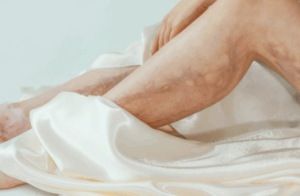
Your legs do a lot for you—support your weight, help you move, and keep you active throughout the day. But when something isn’t quite right with your veins, your legs might start to send subtle (or not-so-subtle) signals. At The Vein Institute of Pittsburgh, we believe that listening to your body—especially your legs—can be the key to early detection and effective treatment of vein disease.
Vein disease, also known as chronic venous insufficiency, affects millions of Americans. While it’s often brushed off as “just part of aging,” untreated vein issues can worsen over time, leading to pain, skin changes, and even ulcers. The good news? If caught early, vein disease is highly treatable.
So, what are your legs trying to tell you?
- Leg Heaviness or Fatigue
Do your legs feel unusually heavy by the end of the day, especially after standing or sitting for long periods? This could be more than just tired muscles. Heaviness and fatigue are common early signs of vein disease and often result from blood pooling in the veins due to poor circulation. It’s your body’s way of saying your veins are struggling to pump blood back to the heart efficiently.
- Visible Veins: Varicose or Spider Veins
One of the most recognizable signs of vein issues is the appearance of varicose or spider veins. These twisted, bulging, or web-like veins often show up on the legs or behind the knees. While many people view them as a cosmetic concern, they can be a clear indicator of underlying venous insufficiency. If you’re noticing new or worsening varicose veins, it’s time to take a closer look—literally and medically.
- Swelling in the Legs, Ankles, or Feet
Persistent swelling in your lower limbs, especially toward the end of the day, could point to poor venous circulation. When the valves in your veins aren’t working properly, blood and fluid can collect in the legs. This swelling may temporarily improve with elevation but often returns quickly. Over time, chronic swelling can lead to skin changes and discomfort.
4. Aching, Throbbing, or Cramping
Painful legs don’t have to be your “new normal.” Aching, throbbing, or cramping sensations—especially at night or after prolonged periods of standing—can all be signs that your veins aren’t functioning correctly. If your legs feel restless, itchy, or uncomfortable, don’t chalk it up to overuse or aging. These symptoms deserve attention.
5. Skin Discoloration or Changes in Texture
When vein disease progresses, it can begin to affect the appearance and health of your skin. You may notice:
- Darkening or reddish-brown discoloration around the ankles.
Dry, itchy, or scaly skin on your lower legs. - Skin thickening or a leathery texture.
These changes occur as a result of long-standing inflammation and poor circulation. In advanced cases, these skin changes can lead to venous ulcers, which are difficult to heal and require medical care.
- Open Sores or Slow-Healing Wounds
If you’ve noticed a sore or wound on your leg that just won’t heal, it could be a venous ulcer. These are often found near the ankles and are the result of long-term pressure and fluid buildup caused by venous insufficiency. These ulcers can become painful, infected, and severely impact your mobility and quality of life. Immediate treatment is essential to promote healing and prevent complications.
- Restless Legs at Night
Restless Leg Syndrome (RLS) is often associated with vein issues, particularly when symptoms are worse at night. If you frequently feel the urge to move your legs, especially while resting or lying down, it could be related to poor venous return. Many patients report relief from RLS after receiving treatment for their vein disease.
Why Early Diagnosis Matters
Many people ignore or downplay the signs of vein disease, assuming it’s just part of getting older or being on your feet all day. But the earlier you seek evaluation and treatment, the better your outcomes will be. Left untreated, vein disease can lead to serious health issues—yet with modern, minimally invasive treatments, relief is well within reach.
At The Vein Institute of Pittsburgh, we use state-of-the-art diagnostic tools to assess your vein health and create a customized treatment plan. From lifestyle modifications and compression therapy to advanced procedures like endovenous ablation and sclerotherapy, we offer a range of options to help you feel and look your best.
Take the First Step Toward Healthier Legs
If your legs are trying to tell you something, don’t ignore the signs. Whether it’s visible veins, swelling, pain, or skin changes, your body is signaling that something isn’t quite right. Trust the experts at The Vein Institute of Pittsburgh to help you understand what your legs are saying—and to find the right solution.
Schedule your evaluation today and take the first step toward healthier, more comfortable legs.
